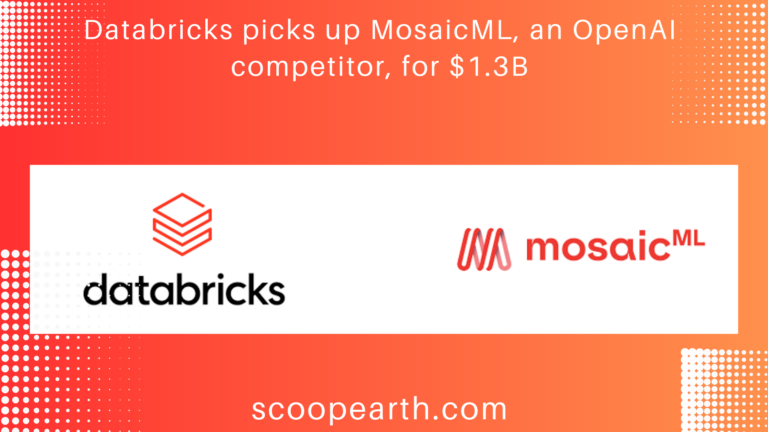Tuesday, 27 June 2023, Bengaluru, India
A significant wave of M&A will also likely result from investors’ desire to acquire hot tech startups in AI. Databricks revealed today that it would pay $1.3 billion for MosaicML, an open-source startup with experience in neural networks that has developed a platform for businesses to train big language models and use generative AI tools based on them.
Before this, DCVC, AME Cloud Ventures, Lux, Frontline, Atlas, Playground Global, and Samsung Next were among the investors who contributed to MosaicML’s round of under $64 million.
It’s worth noting that this company’s last investor round valuation was only $222 million, indicating that it has increased by 6 times with this departure. This great pricing certainly does highlight how crazy the AI business is right now, as well as the need for people and technology in the sector.
Frothy, but only compared to rival OpenAI, which received a last-round investment from Microsoft valued at more than $40 billion. In that regard, Databricks received a great deal.
Following the agreement, MosaicML will join the Databricks Lakehouse Platform and offer generative AI tooling alongside the company’s current multi-cloud capabilities, which include integration, storage, processing, governance, sharing, analytics, and services relating to artificial intelligence.
The emergence of generative AI, which OpenAI popularised and made widely available, is currently the topic of much discussion around the globe. However, the Microsoft-backed ChatGPT parent company is not operating in a vacuum; competitors are rising and expanding to take advantage of the escalating interest in the industry.
Today, we announced that we’ve agreed to acquire MosaicML, a leading generative AI platform. It’s anticipated to be the biggest deal in Databricks’ 10+ year history, and I couldn’t be more excited about it. Together, we’ll enable any company to build, own, and secure best-in-class generative AI models while maintaining control of their data.-Ali Ghodsi, CEO & co-founder Databricks
In that aspect, MosaicML is no slouch. The last version of LLM’s MPT-7B has received 3.3 million downloads. The two main ways Mosaic’s method differs from others are as follows. It is open source, to start. The second focus is on businesses creating their LLMs using their data. MPT-30B, the company’s most recent release, “has demonstrated how organizations can quickly build and train their state-of-the-art models cost-effectively using their data,” according to the company.
Every company should be able to benefit from the AI revolution if they have more control over how their data is used. In a statement, Databricks co-founder and CEO Ali Ghodsi said, “Our customers will benefit from our shared vision with Databricks and MosaicML as they navigate the biggest computing revolution of our time. “Databricks and MosaicML have a tremendous opportunity to democratise AI and make the Lakehouse the best venue to build generative AI and LLMs.
The whole MosaicML team will join Databricks after the transaction closes, according to Databricks; this retention agreement may be a factor in the high price tag in this case.
There will probably be more M&A in this sector in the future. The announcement of Databricks’ MosaicML comes just one month after sometimes-competitor Snowflake announced its own AI purchase when it selected Neeva. This startup sought to develop a novel method to search across consumers and enterprises leveraging AI advancements.
[Source of Information : Techcrunch.com]










